
One of the most perfect moated medieval castles in the land. The towers, reflected in the water, look as they would have done 600 years ago when Sir Edward Dalyngrigge, a knight of Edward II, rode up to his new home. Although the hundred years war was still raging and there was the threat of armed Frenchmen gliding up the waterways to Bodiam, the castle was designed as a style statement rather than a fortification. But its assertive looks discomforted Parliamentarians during the civil war and unhappily they gutted it to prevent it being used as a Royalist defence. Enough curling stone stairways remain, however, for modern-day adventurings along the battlements
• Near Robertsbridge, East Sussex, +44 (0)1580 830196
nationaltrust.org.uk Photograph: Getty Images

Fifty years in the making, this was intended to stamp English might irrevocably on Welsh soil. Having recently returned from the crusades, Edward I tried to echo the walls of Constantinople to illustrate his imperial ambitions and spurned traditional round towers in favour of intimidating polygonals. It survived three sieges during the civil war pretty much unscathed and the King's Gate is rated the mightiest in the land while the Eagle Tower is one of the finest decorated medieval fortifications. The closest thing Wales has to a royal palace, it was used for the investiture of Prince Charles in 1969.
• Caernarfon, near Bangor, +44 (0)1286 677617
caernarfon-castle.co.uk Photograph: Getty Images
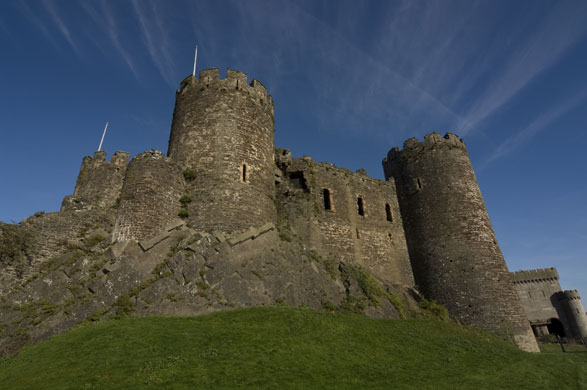
It perches ravishingly on what was a rocky promontory sticking out into the River Conwy and was the first of the Snowdonian castles built by Edward I in his efforts to subdue the Welsh. In intervening centuries it was captured, recaptured and ransomed by sundry kings and their foes and, inevitably, it was eviscerated during the English civil war. It remains a dramatic silhouette against the water and the fact that the original walls still encircle the town preserves the medieval flavour. It's pretty well preserved inside and you can view the North Wales coast while balancing atop the soaring towers.
• Conwy, near Colwyn Bay, +44 (0)1443 336000
cadw.wales.gov.uk
• This gallery was amended on Saturday 12 September 2009. We situated Conwy Castle in Gwynedd when it is now in Conwy. This has been corrected. Photograph: Travel Ink/Getty Images/Gallo Images
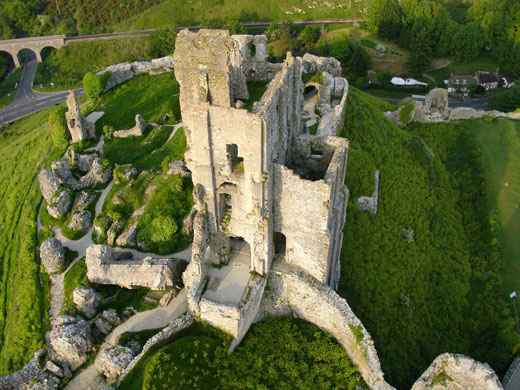
The jagged contours rearing over the village of Corfe are a famous thrill; and the discovery last year of lavish Norman carvings suggests that the castle might have been one of the six most important in England. It was begun by William the Conquerer after 1066, Henry I added a keep and King John improved the comforts and fortifications. It lodged royals until Elizabeth I sold it to her Lord Chancellor. One indomitable resident, Lady Mary Bankes, held out here against Parliamentary forces after her husband was killed in the civil war, but was finally betrayed and the stronghold demolished.
• Near Wareham, +44 (0)1929 481294
nationaltrust.org.uk Photograph: National Trust/PA
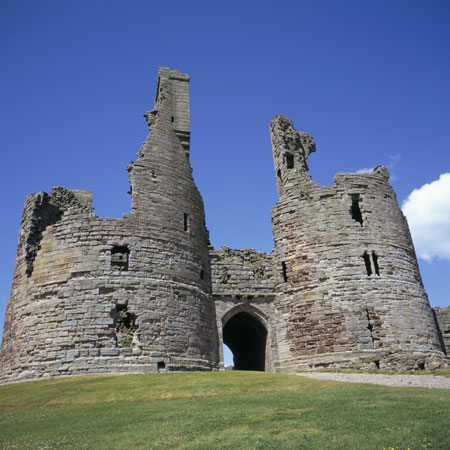
There are fancier ruins, but the melodrama of its clifftop perch is so potent that Turner rose daily at dawn to work on his several paintings of it. The grandest castle in Northumberland, it was started in 1313 by the Earl of Lancaster who was nine years into his fantasy when he was executed. John of Gaunt took over where he had left off and it enjoyed a century of uneventful glory until the War of the Roses in the 1460s. The injuries it suffered while shielding the Lancastrians were never healed and it has been gently decomposing ever since.
• Near Craster, Alnwick, +44 (0)1665 576231
nationaltrust.org.uk Photograph: Geoff Renner/Jupiter Images
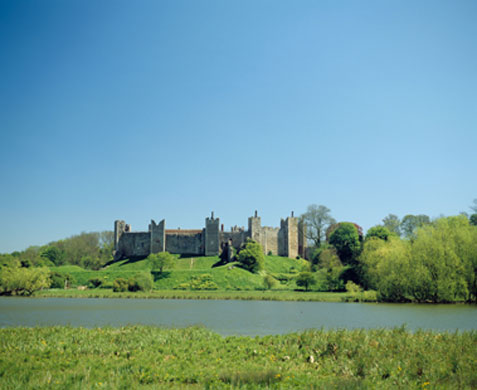
From a distance its flint bulk looks untouched by the past eight centuries and modern walkways allow you to promenade the ramparts. Mary Tudor holed up here with a phalanx of followers while waiting to find out if she would succeed her dead brother Edward VI in 1553, and her sister Elizabeth found it a handy repository for priests who defied the new Church of England. Daringly, the 12th-century builders did without a keep, relying instead on earthworks, the massive curtain wall and 13 towers bridged by planks which could be removed to foil intruders.
• Framlingham, near Woodbridge, +44 (0)1728 724189
english-heritage.org.uk
• This gallery was amended on Saturday 12 September 2009. We said Framlingham Castle in Norfolk when it is – the Dukes of Norfolk notwithstanding – in Suffolk. This has been corrected. Photograph: Simon Webster/Rex Features
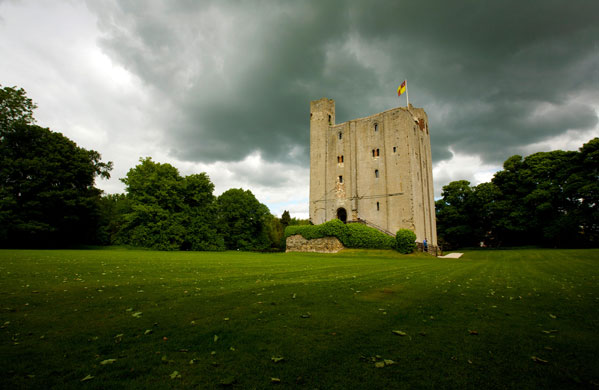
This is the best-preserved Norman keep in the country - so well preserved that it is not strictly a ruin although the rest of the castle has long since vanished. Despite the best efforts of King John and the French Dauphin who besieged it in the 1200s the banqueting hall and minstrels gallery spanned by a 28ft Norman arch survive almost intact. The whole is the handiwork of Aubrey de Vere, son of one of William the Conquerer's favourite knights, who hired the Archbishop of Canterbury to design a huge fortress in 1140. It housed five centuries of de Veres plus a clutch of visiting monarchs and now hosts weddings by candlelight.
• Near Sudbury, +44 (0)1787 460261
hedinghamcastle.co.uk Photograph: Martin Beddall /Alamy
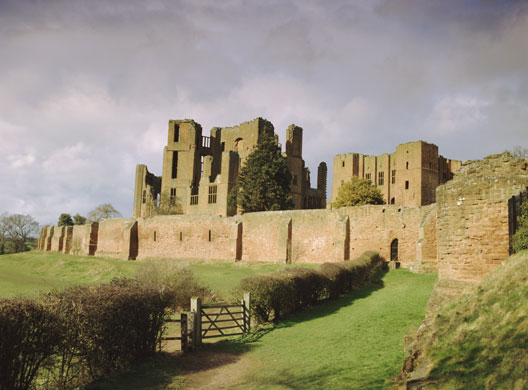
In 1266 the castle and its 1,200 inmates endured the longest siege in English history as the forces of Prince Edward, later Edward I, spent six months trying to overcome its defences. It had been built a century earlier and a vast lake was added to repel invaders. In the 16th century Robert Dudley glamorised the place to seduce Elizabeth I and almost bankrupted himself with 19 days of carousing in her honour. The spectacular contours of the Norman keep and Tudor buildings survive, the Elizabethan garden has been recreated and there are plans to restore the lake.
• Kenilworth, near Warwick, +44 (0)1926 852078
english-heritage.org.uk Photograph: Getty

Strictly, a palace rather than a castle, but the English forces who replaced an existing manor with fortifications in the 14th century would have been untroubled by the difference. James I began its promotion to a royal residence in the 15th century; James V and Mary Queen of Scots were born here, but after the union of Scotland and England the court moved south and apart from a brief stopover by Bonnie Prince Charlie, history largely ignored the place from then on. The great hall, and James V fountain survive more or less intact and the whole roofless skeleton is as awesome spectacle on the banks of a loch.
• Linlithgow, West Lothian, Scotland, +44 (0)1506 842896
historic-scotland.gov.uk Photograph: Philip Craven / Robert Harding /
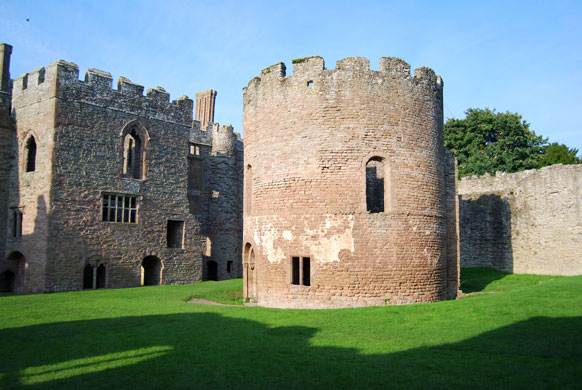
Daniel Defoe described it as "the very perfection of decay", so exquisitely has it mouldered since it was abandoned in 1689. It has served as a Norman fortress and a royal palace, created by the most powerful man in 14th-century England, Roger Mortimer. The "Princes in the Tower" grew up here, Catherine of Aragon moved in with her first husband and the future Mary I spent three winters in its staterooms. A decent chunk of the Norman chapel survives and the inner bailey, its four towers and part of the gatehouse, would all have been familiar to its 11th-century creators.
• Ludlow, +44 (0)1584 873355
ludlowcastle.com Photograph: Greg Balfour Evans/Alamy

